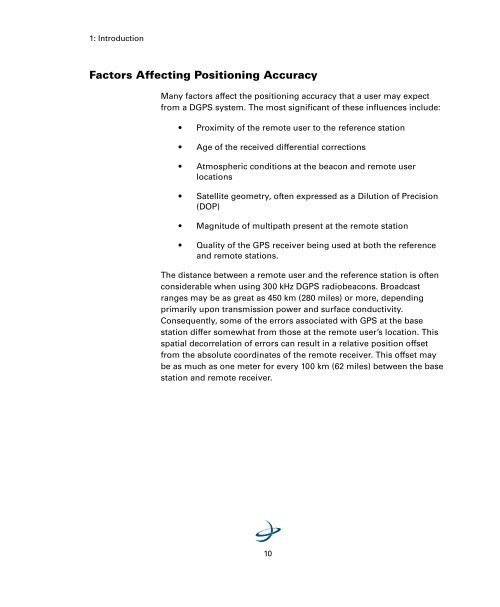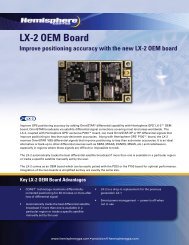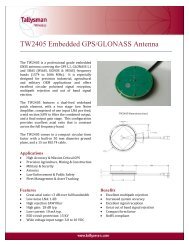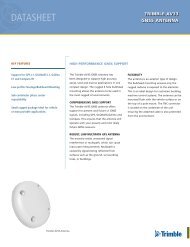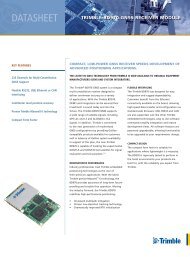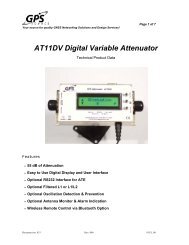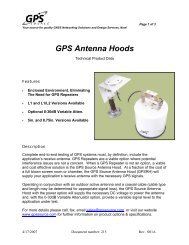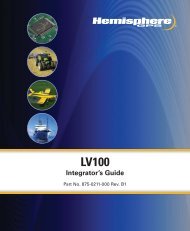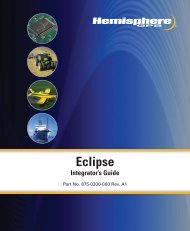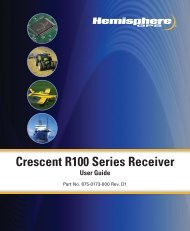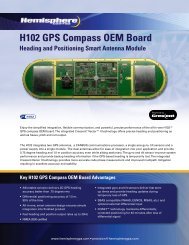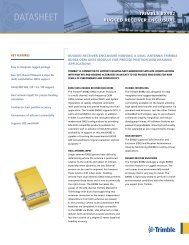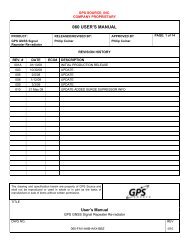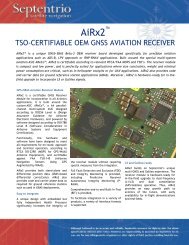MBX-4 User Guide - TerraSond
MBX-4 User Guide - TerraSond
MBX-4 User Guide - TerraSond
You also want an ePaper? Increase the reach of your titles
YUMPU automatically turns print PDFs into web optimized ePapers that Google loves.
1: Introduction<br />
Factors Affecting Positioning Accuracy<br />
Many factors affect the positioning accuracy that a user may expect<br />
from a DGPS system. The most significant of these influences include:<br />
• Proximity of the remote user to the reference station<br />
• Age of the received differential corrections<br />
• Atmospheric conditions at the beacon and remote user<br />
locations<br />
• Satellite geometry, often expressed as a Dilution of Precision<br />
(DOP)<br />
• Magnitude of multipath present at the remote station<br />
• Quality of the GPS receiver being used at both the reference<br />
and remote stations.<br />
The distance between a remote user and the reference station is often<br />
considerable when using 300 kHz DGPS radiobeacons. Broadcast<br />
ranges may be as great as 450 km (280 miles) or more, depending<br />
primarily upon transmission power and surface conductivity.<br />
Consequently, some of the errors associated with GPS at the base<br />
station differ somewhat from those at the remote user’s location. This<br />
spatial decorrelation of errors can result in a relative position offset<br />
from the absolute coordinates of the remote receiver. This offset may<br />
be as much as one meter for every 100 km (62 miles) between the base<br />
station and remote receiver.<br />
10


